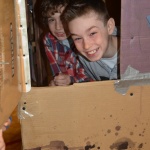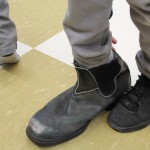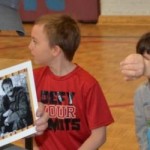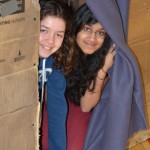FREQUENTLY ASKED QUESTIONS
What is a 'hope-giver'?
In Tim Huff’s best-seller Bent Hope, he describes true hope as “relentlessly life-giving and life-changing” and the “greatest common denominator among all people around the globe”. Not simply a wishful notion, as it is too commonly conceived, hope is meant to alter perspectives, lift spirits and help bring individuals, families and communities into wellness. This can only be realized when confidence is at the centre of hope; confidence that another, or others, will come alongside with presence and care in times of uncertainty, hardship and challenge. Thus, a “hope-giver” is one who does much more than feel sympathetic and wishful for another person or persons. A “hope-giver” is one who can be counted on to thoughtfully and assuredly purpose their feelings into meaningful action.
Can you unpack 'Bring Hope. Serve Well. Celebrate.'?
Do you address bullying in your presentations?
What are your themes for teenager and adult presentations?
Specialty talks for parents are designed to visit conversations that explore the heartbeat of the family and how it impacts a young life inside and outside of the home, including the popular theme – “A Kitchen Table Revolution; home as a beacon.”
Specialty talks for educators are designed to encourage and challenge teachers as influence-makers and culture-shapers, including the popular theme – “Hope-giving 101; you can’t teach social justice if you don’t live social justice.”
Specialty talks for principals, vice-principals and education superintendents are designed to inspire and esteem top administration to engage in the fullness of their role and the opportunity to lead with grace and enthusiasm, including the popular theme – “Bring hope. Serve well. Celebrate; the ultimate calling.”
What happens in the interactive children’s classroom sessions?
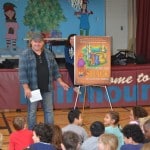 The Compassion Series’ first interactive classroom sessions are built around Tim Huff’s first children’s book The Cardboard Shack Beneath the Bridge: Helping Children Understand Homelessness. The first step includes a meeting with the teacher(s) or school administration, to discuss the dynamics of the class or classes that will take part, as well as the desired outcomes and scheduling.
The Compassion Series’ first interactive classroom sessions are built around Tim Huff’s first children’s book The Cardboard Shack Beneath the Bridge: Helping Children Understand Homelessness. The first step includes a meeting with the teacher(s) or school administration, to discuss the dynamics of the class or classes that will take part, as well as the desired outcomes and scheduling.
When the scheduled date arrives Tim, or an engaging volunteer leader, along with the three trained volunteers will come early to set up. Set up includes a Cardboard Shack prop, the children’s book in large panels on an easel, and three stations. The first portion of the session is a reading of the large form book, inclusive of an interactive dialogue with the students. The students are then divided into three separate groups (around the teacher’s decision-making). Each group attends one of the three stations for 10-15 minutes, rotating until all three groups have visited all three stations.
The cardboard shack is one station – children enter it in pairs and come out to discuss with the volunteer leader and other students in their group what it might be like to call that home. The second station is an over-sized coat and wet mitten station – children try these on and discuss things like what it might be like to not have nice things to wear or what it might be like to eat lunch in wet mittens. The third station is a picture station, where the volunteer leader guides an insightful discussion around a series of untraditional pictures of homeless people: smiling, playing instruments, with pets.
The entire book and stations sequence takes between 60 and 75 minutes. This session is ideal for grades one, two, three, four, but has also been successfully altered for grades five through eight. This session is often enthusiastically followed up by teachers with their students around art, writing, social studies, and drama.
Will Tim come and speak at events outside of the Greater Toronto Area? What about the rest of Canada?
We're reading one of Tim's books in my book club - will Tim come speak?
Does the Compassion Series offer sessions for home school groups?
Can you explain The Compassion Series logo?
 While processing ideas for a graphic icon as part of The Compassion Series logo, our designer, Darrin Henein, identified that the word “compass” is embedded within the word compassion. This opened up a meaningful dialogue about using the visual theme of a compass as the ideal centrepiece for our logo; being guided by compassion and/or charting a compassionate life.
While processing ideas for a graphic icon as part of The Compassion Series logo, our designer, Darrin Henein, identified that the word “compass” is embedded within the word compassion. This opened up a meaningful dialogue about using the visual theme of a compass as the ideal centrepiece for our logo; being guided by compassion and/or charting a compassionate life.